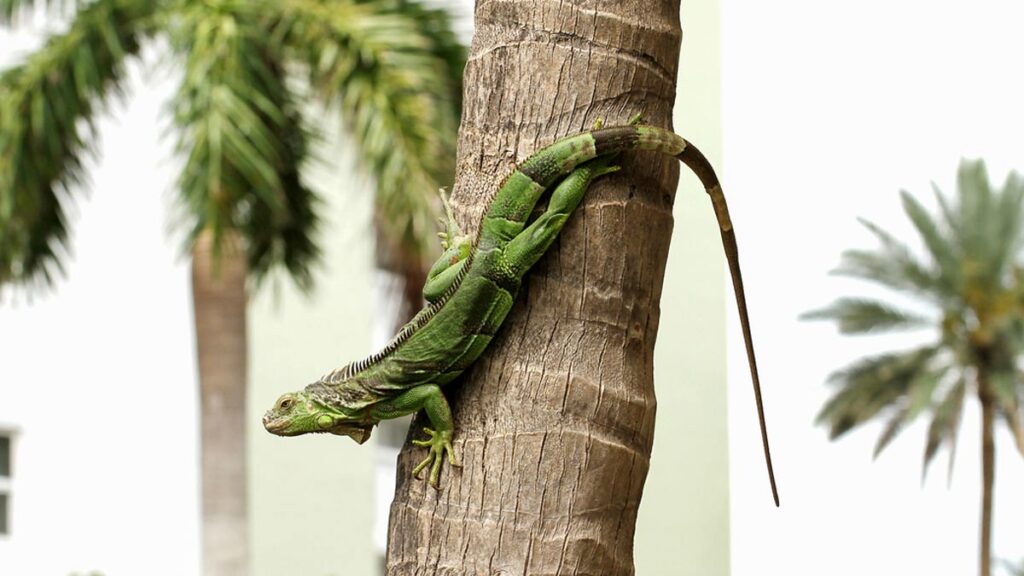
Preventing and Managing Florida's Palmetto Bugs
A Comprehensive Guide
Updated on: January 2024

Despite its many attractions, Florida is home to a variety of pests, with the palmetto bug being a prevalent species. These insects, often mistaken for common cockroaches, have become a great concern for homeowners across the state. As the name suggests, they find shelter under the fronds of palmetto trees but easily migrate into homes in search of food and better living conditions. Managing and preventing these insects becomes paramount not just for the sake of comfort, but also for health reasons. With a knack for thriving in Florida’s warm environment, understanding the nature and behavior of palmetto bugs is the first step toward a bug-free home.
Find What You Need
Understanding Palmetto Bugs
Palmetto bugs, scientifically known as Periplaneta americana, are a species of large cockroaches native to the southeastern United States. While they share the same family as the more commonly recognized German and Oriental cockroaches, palmetto bugs are distinct in size and coloration, often growing up to 1.5 inches in length with a reddish-brown hue. Another defining feature is their capability to fly, a characteristic not always present in other household cockroach species.
While unsettling to encounter, palmetto bugs are not directly harmful or venomous. Their main threat to human health arises from the allergens they can produce, which might exacerbate asthma and allergy symptoms in sensitive individuals. Moreover, these bugs tend to scavenge and move through unsanitary areas, picking up and potentially spreading harmful bacteria and pathogens. When they come in contact with food or surfaces in homes, there’s a risk of contamination, making it essential to address their presence promptly.
Palmetto bugs are drawn to food sources and moisture and even the cleanest homes in Florida can face an infestation, particularly if there are structural vulnerabilities that grant them easy access. Furthermore, a common misconception is that they breed rapidly indoors. While palmetto bugs can breed in homes, they prefer outdoor habitats for reproduction, especially areas that are damp and undisturbed. Knowing the facts and understanding their behavior is important in effectively managing and preventing an infestation.
Take Away
Understanding the behavior of palmetto bugs and implementing proactive prevention measures are essential for Florida residents. These large insects, often confused with common cockroaches, can pose health risks due to allergens and bacterial contamination. Regular home inspections, proper sealing, and cleanliness play a vital role in deterring infestations. While natural repellents and DIY traps offer relief, professional pest control services provide comprehensive solutions for larger problems. Consistency in practices and raising awareness within the community contribute to maintaining the comfort, safety, and market value of homes in Florida.
Identifying an Infestation
In identifying a palmetto bug infestation, homeowners should be aware of the subtle signs and indicators such as the presence of droppings, which resemble pepper grains, in areas like kitchen cabinets or behind appliances. Another clue might be the musty odor these bugs emit, especially when in large numbers. Moreover, finding oval-shaped egg capsules, usually brownish in color and about a quarter-inch long, is a definitive sign of an active infestation.
Within homes, palmetto bugs gravitate towards damp and warm areas, making bathrooms, kitchens, basements, and attics prime real estate for these pests. Furthermore, they’re nocturnal so be aware of them in dark hours. While they prefer the outdoors, cracks in the foundation, gaps in window or door frames, and unscreened vents can all act as entry points.
Palmetto bugs exhibit heightened activity during the warmer months, from late spring to early fall. This period provides optimal temperatures and frequently higher humidity which is very attractive to palmetto bugs. However, the onset of cooler weather doesn’t mean they disappear. Instead, it’s during these chillier months that they’re more likely to seek the warmth and shelter of homes, making year-round vigilance essential for Florida residents.
Attractants and Deterrents
To protect your home and health, it is important to not only understand why palmetto bugs appear and their behaviors, but also how to get rid of them effectively with different DIY and professional methods.
What Attracts Palmetto Bugs?
Palmetto bugs are opportunists and seek sustenance and shelter wherever they can find it. In homes, common attractants include food remnants, particularly carbohydrates and sweets. A poorly sealed bag of sugar, bread crumbs, or even pet food left out overnight can act as beacons for these insects. Additionally, these pests are drawn to certain scents, especially decomposing organic matter. Overripe fruits, open garbage cans, and even dirty drains can be tantalizing for them.
Beyond food sources, the environment plays a huge role in attraction. Palmetto bugs thrive in moist environments and leaky pipes, wet sponges, or even humidity-prone areas in a home can become their favorite spots.
Natural Repellents and DIY Solutions
In terms of deterrence, naturally occurring substances including herbs like bay leaves, catnip, and mint are natural palmetto bug repellents. A simple home solution is to place crushed bay leaves in areas where these bugs are frequent. Additionally, diatomaceous earth, a natural and non-toxic powder, can be sprinkled around potential entry points. This substance dehydrates the bugs upon contact. For DIY traps, a shallow bowl filled with water and a bit of sugar, placed overnight, can act as an effective lure and trap. The bugs get attracted to the sugar, wade into the water, and find it challenging to escape.
Commercial Solutions
There’s an abundance of palmetto deterrence products on the market. Products like Raid’s Roach Gel or Ortho Home Defense are designed to target roaches and palmetto bugs. However, when dealing with a sizable infestation, professional pest control services may be the most effective route. Companies like Orkin and Terminix offer specialized services targeting palmetto bugs, typically guaranteeing results. It’s essential to know that while many commercial insecticides are effective, repeated applications are sometimes necessary. Over time, some bugs develop resistance or immunity to commonly used products, making it important to rotate treatments or increase the potency under professional guidance.
Prevention and Management
Get ahead of an infestation before it occurs by regularly inspecting your home and impleteing efficient cleaning protocols along with outdoor mitigation techniques.
Home Sealing and Inspection
A proactive approach is often the best way to ensure that palmetto bugs don’t find their way into your home. Starting with home sealing and inspection, homeowners should prioritize sealing gaps and cracks in the foundation, as these act as primary entry points for these pests. Door sweeps, especially on exterior doors, and properly sealed windows can serve as first-line defenses. Expanding foam or caulk from brands like DAP or GE are ideal for sealing these vulnerabilities. Regular home inspections, ideally semi-annually, ensure that newer vulnerabilities aren’t overlooked. Using a flashlight, inspect dark, damp places like basements, crawlspaces, and attics to identify any bug activity or entry points.
Cleaning Protocols
Maintaining a clean environment by regularly vacuuming, especially in dining areas, ensures that food particles aren’t available as a food source and can significantly deter palmetto bugs. Pantries and food storage areas deserve special attention. Using airtight containers, like those from OXO or Rubbermaid, prevents these pests from accessing stored food. After treating an infestation, be sure to wipe down surfaces with disinfectant cleaners, ensuring no residues or contaminants remain. Brands such as Lysol or Clorox are effective for post-treatment cleanups.
Outdoor Management
Overgrown gardens or piles of wood or leaves can act as hideouts for palmetto bugs and regularly trimming plants and keeping a tidy yard can go a long way in prevention. Additionally, introducing biological controls can be a natural and environmentally-friendly approach to managing these pests. Beneficial nematodes, available from brands like BioLogic or NemaSeek, can be introduced to gardens. These microscopic worms feed on a variety of pests, including palmetto bugs. Furthermore, creatures like geckos, frogs, and certain bird species are natural predators of these bugs. Encouraging such wildlife in your yard, while ensuring they don’t become pests themselves, can contribute to a balanced ecosystem that keeps palmetto bug populations in check.
Broader Implications of Palmetto Bugs
Health Implications
Living alongside palmetto bugs isn’t just an unpleasant experience as it carries potential health implications. While these insects aren’t venomous, their presence might exacerbate respiratory conditions. Shed skins, droppings, and decaying bug bodies release allergens into the air. Individuals with asthma or allergies might experience heightened symptoms, including sneezing, itching, and respiratory distress.
Furthermore, palmetto bugs are known to traverse unclean areas, gathering harmful bacteria on their bodies. As they move through homes, they can contaminate food sources and surfaces, potentially leading to food poisoning or bacterial infections. It’s important to note that the presence of these bugs does not directly lead to diseases, but their habits make the spread of pathogens easier.
Economic and Real Estate Impact
From an economic standpoint, palmetto bug infestations can undeniably have repercussions on the real estate market in Florida. Homes with active infestations might see a reduction in their market value, as potential buyers often view pest issues as indicative of broader neglect or maintenance issues. Exterminator costs, which can range anywhere from $100 to $400 depending on the extent of the infestation and the size of the property, are an immediate expenditure homeowners may face.
Additionally, repeated treatments may be necessary, adding to the financial burden. Prospective homebuyers, aware of the potential costs and health risks, might negotiate for lower prices or even sidestep properties with known palmetto bug issues. As a result, real estate agents often stress the importance of pest control and regular inspections to ensure homes maintain their value in the competitive Florida market.


